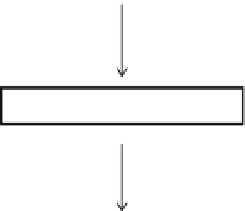Biology Reference
In-Depth Information
a
- Linolenic acid
NO
Lipoxygense
Activation
13-hydroperoxy-linoleic acid
Allene oxide synthase
(AOS)
NO
Activation
12-13-Epoxy-octadeatrienoic acid (EOT)
Allene oxide cyclase
(AOC)
12-oxo-phytodienoic acid (OPDA)
12-oxo-phytodienoic
acid reductase 3
(OPR3)
NO
Activation
Jasmonic acid
Fig. 6.4
Role of NO in activation of jasmonic acid biosynthesis
6.8
Role of NO in Protein
S
-Nitrosylation
NO rapidly induces reversible
S
-nitrosylation of proteins involved in signal trans-
duction
.
The addition of an NO moiety to a cysteine (Cys) thiol to form an
S-nitrosothiol (SNO) is termed S-nitrosylation (Malik et al.
2011
)
.
This redox-
based post-translational modifi cation is a key regulator of protein function in plant
immunity (Malik et al.
2011
). Intracellular NO reacts with various proteins and
nonprotein thiols to form nitrosothiols (Stamler et al.
2001
). Most of the NO-modifi ed
proteins are regulated by
S
-nitrosylation. S-Nitrosylation refers to the incorporation
of the NO moiety to a Cys sulfur atom to form a S-NO bond (Martinez-Ruiz and
Lamas
2004
). Protein S-nitrosylation occurs at a single critical Cys residue by
oxygen-dependent chemical reactions or by the transfer of NO from a nitrosothiol
to a protein sulfhydryl group (Lindermayr et al.
2005
). NO can react with sulfhydryl
groups on proteins, yielding SNOs, which lead to a change in protein function or








Search WWH ::

Custom Search